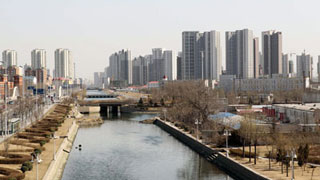- Cities contribute an estimated 70 percent of the energy-related greenhouse gases and are therefore crucial to meeting China’s carbon reduction targets. With China set to add an estimated 350 million residents to its cities over the next 20 years, the case for urgent action is strong.
- There is a strong alignment between low-carbon and locally appropriate sustainable development strategies for cities. A low-carbon city is, above all, a sustainable, efficient, livable, and competitive city.
- An estimated 40 percent of city emissions comes from power generation and industrial activities each, with the remaining 20 percent from transport, buildings, and waste.
- Cities will need to act on multiple fronts, from improving their land-use and spatial development to energy-efficient buildings and industries, from public transport system to efficient management of water, wastewater, and solid waste. Also climate change adaptation needs to be incorporated in the planning, investment decisions, and emergency-preparedness plans of cities.
- Actions affecting land-use and spatial development are among the most critical because carbon emissions are closely connected to the urban form. Spatial development has also very strong “locked-in” effects: once cities grow and define their urban form it is almost impossible to retrofit them because the built environment is largely irreversible and very costly to modify.
- Five key cross-cutting actions for low-carbon growth include: setting the right indicators to encourage low-carbon growth; complementing administrative measures with market-based approaches and tools; breaking the link between land use, finance and urban sprawl; encouraging more intersectoral and interjurisdictional cooperation; and balanceing mitigation and adaptation measures.
- Actions will need to focus on addressing specific sectoral challenges, particularly those related to energy, transport, and other municipal services including water and waste management services. There are lessons to be learned from the experience of Chinese cities and World Bank-supported programs
- Implementing a comprehensive multisectoral policy agenda requires coordinated action from a range of stakeholders including different levels of government, civil society, and citizens.
- China has an opportunity to implement low-carbon strategies and approaches during the 12th Five-Year Plan period and beyond. This will make its future cities more sustainable, more efficient, more competitive, and more livable.

